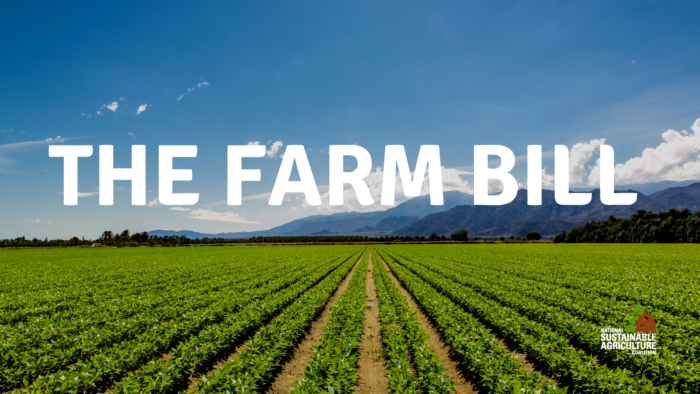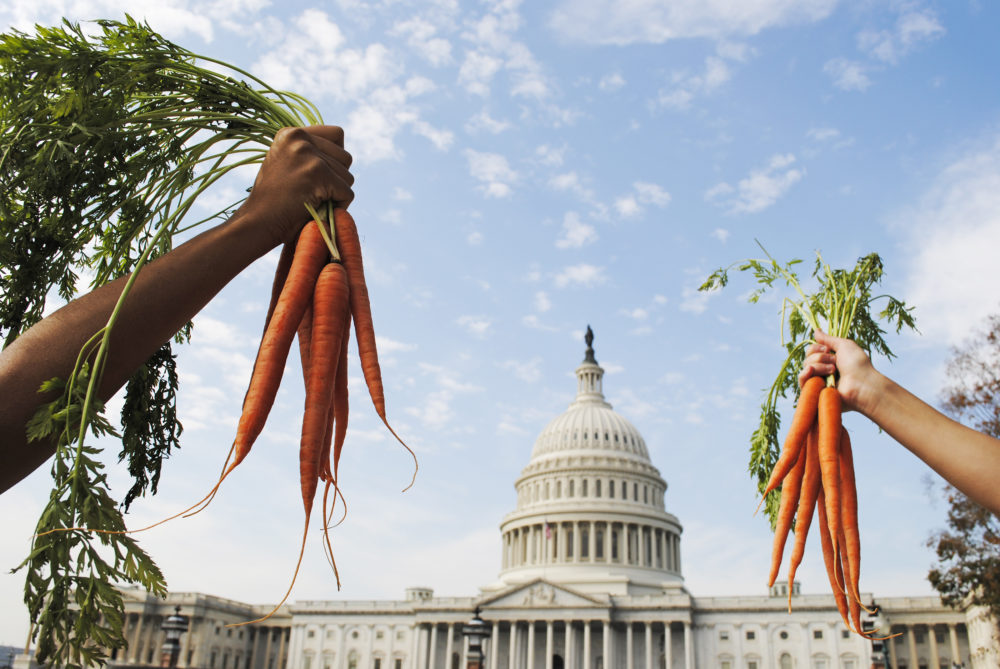
Last Updated December 2020
The National Sustainable Agriculture Coalition’s (NSAC)’s Agenda for the 2018 Farm Bill advocated for programs and policies that support the next generation of American farmers and ranchers, advance farm conservation and stewardship, expand local and regional food systems, invest and diversify our public seed supply, and ensure a more transparent and fairer federal crop insurance program. After almost two years of intense debate and several suspenseful months in farm bill negotiations, the President signed the “Agriculture Improvement Act of 2018,” otherwise known as the 2018 Farm Bill, into law on December 20, 2018.
The final bill included both victories and disappointments for the sustainable agriculture community. Find a detailed breakdown of wins, losses, and opportunities in our detailed 2018 Farm Bill drilldown series:
- 2018 Farm Bill By the Numbers
- Part 1: Local and Regional Food Systems and Rural Development
- Part 2: Beginning and Socially Disadvantaged Farmers
- Part 3: Organic Agriculture
- Part 4: Conservation
- Part 5: Research and Plant Breeding
- Part 6: Commodity Programs and Crop Insurance
Work is underway now on successfully implementing the 2018 Farm Bill. Stay up to date:
- Find the latest policy developments around 2018 Farm Bill implementation efforts on our blog
- Learn about opportunities for farm bill action at our Take Action center
2018 Farm Bill Funding Highlights
The projected total cost of the 2018 Farm Bill over its five-year lifespan is $428.3 billion. The Nutrition Title received the lion’s share of funding, raking in 76 percent of total farm bill funding. The agricultural portion of the new bill, which includes the commodity, crop insurance, conservation, and miscellaneous titles, received 24 percent of the bill’s direct funding. The new farm bill also includes mandatory funding for programs dealing with trade promotion, agricultural research, renewable energy, specialty crop, local and regional food, organic, beginning and socially disadvantaged farmers, and animal disease prevention.
One 2018 Farm Bill highlight: NSAC and our allies and champions in the 2018 Farm Bill was the provision of mandatory, permanent funding to several “tiny but mighty” programs within the bill. These programs were formerly known as “orphan” or “stranded” programs because their funding had to be renewed every farm bill cycle in order for them to continue operating. All of the following programs received mandatory funding through the 2018 Farm Bill:
- Beginning Farmer and Rancher Development Program (BFRDP)
- Outreach and Assistance to Socially Disadvantaged and Veteran Farmers and Ranchers (also known as the “Section 2501” program)
- Farmers Market and Local Food Promotion Program (FMLFPP)
- Value-Added Producer Grants Program (VAPG)
- Organic Agriculture Research and Extension Initiative (OREI)
- Food Insecurity Nutrition Incentives (FINI), which was recently renamed the Gus Schumacher Nutrition Incentives Program (GusNIP)
Some of these programs were combined to create larger, more robust programs: BFRDP and Section 2501 were combined into the Farming Opportunities Training and Outreach (FOTO) program; FMLFPP and VAPG were combined into the Local Agriculture Market Program (LAMP).

